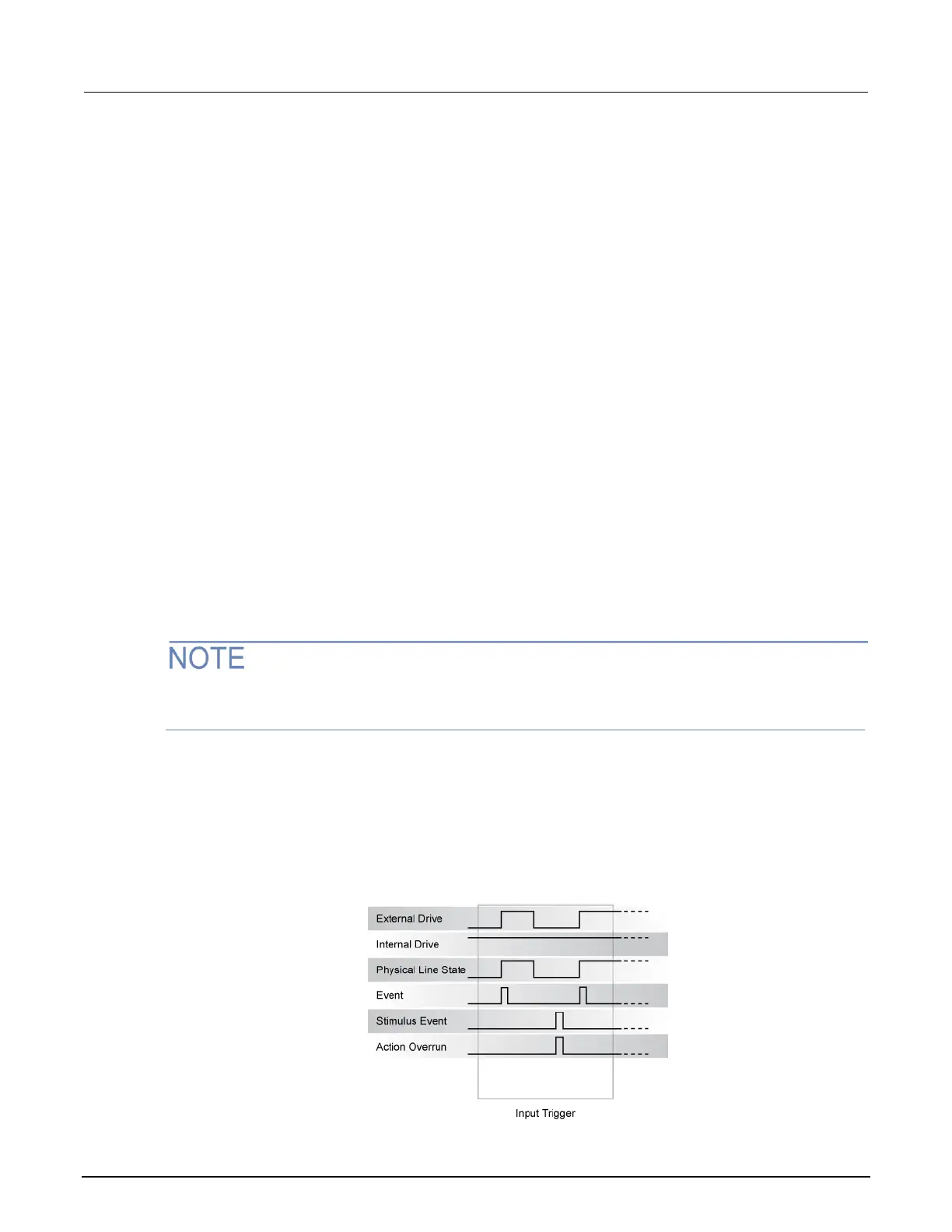Understanding synchronous triggering modes
Use the synchronous triggering modes to implement bidirectional triggering, to wait for one node, or
to wait for a collection of nodes to complete all triggered actions.
All non-Keithley instrumentation must have a trigger mode that functions similar to the SynchronousA
or SynchronousM trigger modes.
To use synchronous triggering, configure the triggering master to SynchronousM trigger mode or the
non-Keithley equivalent. Configure all other nodes in the test system to SynchronousA trigger mode
or a non-Keithley equivalent.
Synchronous master trigger mode (SynchronousM)
Use the synchronous master trigger mode to generate falling edge output triggers, to detect the rising
edge input triggers, and to initiate an action on one or more external nodes with the same trigger line.
In this mode, the output trigger consists of a low pulse. All non-Keithley instruments attached to the
synchronization line in a trigger mode equivalent to SynchronousA must latch the line low during the
pulse duration.
To use the SynchronousM trigger mode, configure the triggering master as SynchronousM and then
configure all other nodes in the test system as Synchronous, SynchronousA, or to the non-Keithley
Instruments equivalent.
Use the SynchronousM trigger mode to receive notification when the triggered action on all nodes
is complete.
Input characteristics:
• All rising edges are input triggers.
• When all external drives release the physical line, the rising edge is detected as an input trigger.
• A rising edge is not detected until all external drives release the line and the line floats high.
Figure 50: Synchronous master input trigger

